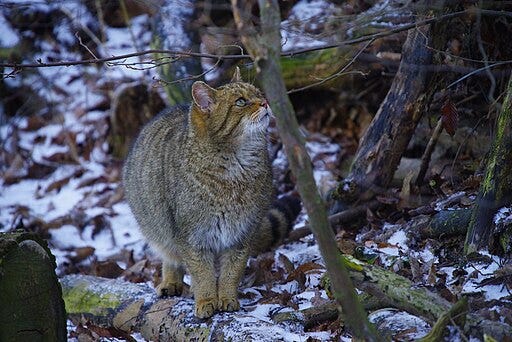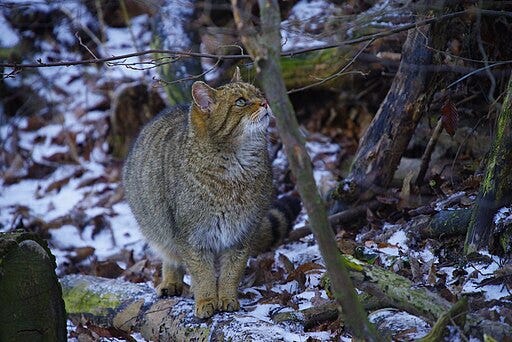Si vous vous promenez dans les forêts d'Île-de-France et que vous apercevez une créature duveteuse ressemblant à un chat tabby : ne la confondez pas avec l'animal perdu d’un humain. Il pourrait bien s'agir du chat forestier (Felis silvestris silvestris), l'un des derniers petits chats sauvages indigènes d'Europe.
Avec ses rayures grises et feu clair, le chat forestier ressemble plus à un chat domestique qu'à un lynx, mais les apparences peuvent être trompeuses. Il ne s'agit pas en réalité d'un chat qui a quitté le confort d'un foyer humain un jour et qui est devenu sauvage. Il s'agit plutôt d'un chat sauvage dès l’origine. Il préfère rester seul et est généralement actif au crépuscule. Le chat forestier est également un excellent chasseur : son régime alimentaire est strictement carnivore, avec une préférence pour les petits rongeurs.
On le croyait disparu de la région et il était classé espèce protégée.
Avec l'urbanisation et le développement, le chat forestier n'avait plus été observé en région parisienne depuis des décennies. On le croyait disparu de la région et il était classé espèce protégée.
Les chats domestiques constituent une autre menace pour le chat forestier, et ce, pour deux raisons. La première est l'hybridation, lorsque les deux sous-espèces s'accouplent. Les chats domestiques apportaient par ailleurs avec eux des maladies que le chat sauvage n'était pas en mesure de combattre.
Cependant, depuis quelques années, le chat forestier fait son retour dans la région et apparaît dans les forêts de Seine-et-Marne. Pour mieux étudier ces animaux, les scientifiques de l'Office français de la biodiversité ont fixé des brosses au pied des troncs d'arbres. Ils saupoudrent les poils de valériane, qui attire les chats mâles en chaleur.
Les chats se frottent aux poils et y laissent de la fourrure. Les scientifiques analysent les brins de fourrure pour déterminer si le chat est bien un chat forestier ou un hybride.
L'Office français de la biodiversité s'investit dans l'étude du chat forestier, dans un souci de protection de la biodiversité et de protection de l'espèce elle-même.
The Wild Cat Returns to France
If you're wandering in the forests around Île-de-France and you see a fluffy creature that looks like a tabby cat, don't mistake it for someone's lost pet. It may well be le chat forestier (Felis silvestris silvestris), one of the last small wild cats indigenous to Europe.
With its gray and light tan stripes, le chat forestier may look more like a house cat than a lynx, but looks can be deceiving. It's not a cat who simply left the comforts of a human home one day and went feral. Instead, the cat is wild through and through. It prefers to keep to itself and is usually active around twilight. The chat forestier is also an excellent hunter—it eats a strictly carnivorous diet, with a preference for smaller rodents.
It was believed to be extinct in the region, and was under protection.
Thanks to urbanization and development, le chat forestier hadn't been seen around the Paris region for decades. It was believed to be extinct in the region, and was under protection.
Domestic cats were another threat to the chat forestier, for two reasons. One was hybridization, when the two subspecies would mate. Domestic cats also brought with them illnesses the wild cat wasn't equipped to handle.
However, in recent years, the chat forestier has made a comeback to the region, appearing in the forests around Seine-et-Marne. To better study the animals, scientists from the French Office of Biodiversity have attached brushes at the bottom of tree trunks. They sprinkle the bristles with valerian, which attracts male cats in heat.
The cats rub against the bristles, leaving some fur behind. The scientists analyze the strands of fur to determine if the cat is in fact un chat forestier or a hybrid.
The Office of Biodiversity is invested in studying le chat forestier, in the interests of protecting biodiversity and protecting the species itself.
Written by: Amy Freeman
French edited by: Aléric Flair et Frederic Amat
Sources:






